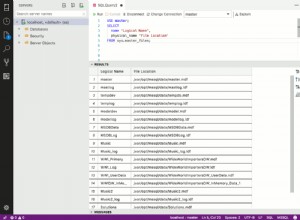Gibt es einen Grund, warum Sie das Rad neu erfinden möchten? Warum nicht das integrierte Auditing von Oracle nutzen?
Oracle Base bietet einige grundlegende Informationen zum Einstieg in die Prüfung:
AUDIT_TRAIL = { none | os | db | db,extended | xml | xml,extended }
Die folgende Liste enthält eine Beschreibung jeder Einstellung:
none or false - Auditing is disabled.
db or true - Auditing is enabled, with all audit records stored in the database audit trial (SYS.AUD$).
db,extended - As db, but the SQL_BIND and SQL_TEXT columns are also populated.
xml- Auditing is enabled, with all audit records stored as XML format OS files.
xml,extended - As xml, but the SQL_BIND and SQL_TEXT columns are also populated.
os- Auditing is enabled, with all audit records directed to the operating system's audit trail.
Um das Auditing für den Datenbank-Audit-Trail zu aktivieren, aktivieren Sie das Auditing für db
SQL> ALTER SYSTEM SET audit_trail=db,extended SCOPE=SPFILE;
System altered.
Fahren Sie die Datenbank herunter und starten Sie sie neu
SQL> SHUTDOWN
Database closed.
Database dismounted.
ORACLE instance shut down.
SQL> STARTUP
ORACLE instance started.
Nun zur Prüfung von SELECTS , INSERTS , UPDATES , DELETES von Benutzer cube tun Sie dies:
CONNECT sys/password AS SYSDBA
AUDIT ALL BY cube BY ACCESS;
AUDIT SELECT TABLE, UPDATE TABLE, INSERT TABLE, DELETE TABLE BY cube BY ACCESS;
Die geprüften Protokolle können durch Abfragen von DBA_AUDIT_TRAIL aufgerufen werden
Weiterführende Literatur:




